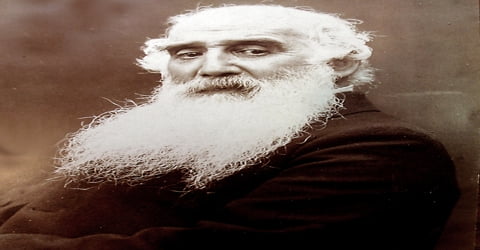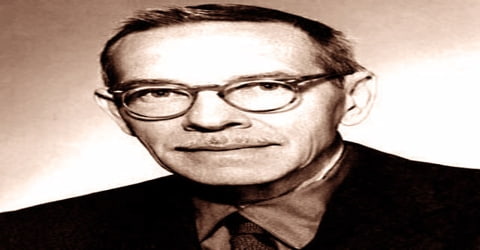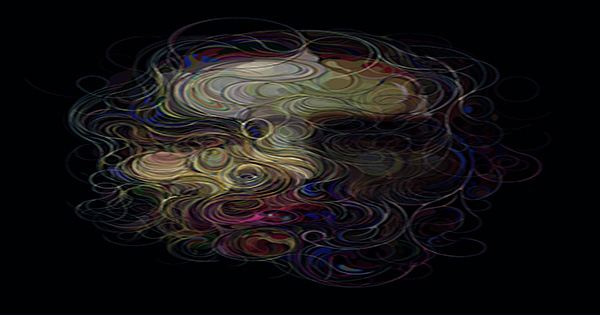Biography of Camille Pissarro
Camille Pissarro – Danish-French Impressionist and Neo-Impressionist painter.
Name: Jacob Abraham Camille Pissarro
Date of Birth: 10 July 1830
Place of Birth: Charlotte Amalie, Saint Thomas, Danish West Indies (now US Virgin Islands)
Date of Death: 13 November 1903 (aged 73)
Place of Death: Paris, France
Occupation: Painter
Father: Frederick Pissarro
Mother: Rachel Petit Pissarro
Spouse/Ex: Julie Vellay (m. 1871–1903)
Early Life
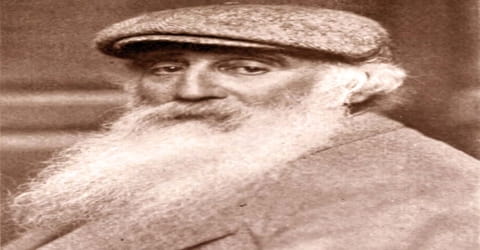
Camille Pissarro, painter and printmaker who was a key figure in the history of Impressionism was born on 10 July 1830 on the island of St. Thomas to Frederick and Rachel Manzano de Pissarro. His importance resides in his contributions to both Impressionism and Post-Impressionism. Pissarro studied from great forerunners, including Gustave Courbet and Jean-Baptiste-Camille Corot. He later studied and worked alongside Georges Seurat and Paul Signac when he took on the Neo-Impressionist style at the age of 54.
Pissarro studied the works of eminent artists including pioneer of the Realist movement, Gustave Courbet and landscape, and portrait artist cum printmaker Jean-Baptiste-Camille Corot. Pissarro along with his friends including Edgar Degas and Claude Monet played a contributory role in carving the Impressionist movement. He aided in forming a society comprising of 15 artists and was often called ‘Father Pissarro’ by many of his acquaintances. He has mentored and supported many of his friends and associates including Post-Impressionists Paul Gauguin, Georges Seurat, Vincent van Gogh, and Paul Cézanne. He is noted as the only artist whose work has been exhibited in all the 8 Impressionist exhibitions held in Paris. He advocated the idea of exhibiting work at alternative forums.
Pissarro was the only painter to exhibit work at each of the eight Impressionist exhibitions. From his early work in the 1850s as a follower of the Realist painter Corot to his later experimentation with color theory alongside the Neo-Impressionists (also called Pointillists) Seurat and Signac in the 1880s, he was always willing to embrace and explore new ways of seeing. Pissarro acted as a father-figure to both Impressionists and Post-Impressionists. He was also a generous teacher; American-born Impressionist Mary Cassatt said of him that ‘he was such a professor that he could have taught stones to draw correctly.’
In 1873, Pissarro helped establish a collective society of fifteen aspiring artists, becoming the “pivotal” figure in holding the group together and encouraging the other members. Art historian John Rewald called Pissarro the “dean of the Impressionist painters”, not only because he was the oldest of the group, but also “by virtue of his wisdom and his balanced, kind, and warmhearted personality”. Paul Cézanne said “he was a father for me. A man to consult and a little like the good Lord,” and he was also one of Paul Gauguin’s masters. Pierre-Auguste Renoir referred to his work as “revolutionary”, through his artistic portrayals of the “common man”, as Pissarro insisted on painting individuals in natural settings without “artifice or grandeur”.
Pissarro attempted different styles in his work and at a later stage studied Neo-Impressionist style and also adopted the ‘pointillist’ approach of post-Impressionist painter, Georges Seurat and his contemporary Paul Signac. He preferred creating portraits in a natural environment. A supportive friend and mentor to influential artists such as Paul Cézanne and Paul Gauguin, he was described by many who knew him as “Father Pissarro.”
Childhood, Family and Educational Life
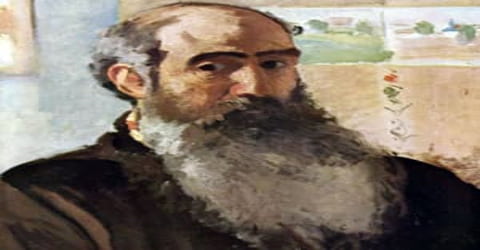
Camille Pissarro, in full Jacob-Abraham-Camille Pissarro, was born on July 10, 1830, in Charlotte Amalie of St. Thomas island in the family of Abraham Gabriel Pissarro, a Portuguese Jewish descendent and Rachel Manzana-Pomie of the Creole heritage. His father, a merchant from France, visited the island to aid in settling the estate of his deceased uncle and ended up marrying his uncle’s widow. His mother was from a French-Jewish family from the island of St. Thomas. The marriage was controversial and not immediately recognized by the small Jewish community where they lived. As a result, the Pissarro children grew up as outsiders.
His family lived above their shop on Charlotte Amalie, the main street of St. Thomas. While a young student, Camille developed an early appreciation of the French art masters. When Camille was 12 years old, his parents sent him away to a school in Passy, near Paris. The young Pissarro showed an early talent for drawing, and he began to visit the collections of the Louvre.
In Paris, Camille worked as an assistant to Danish painter Anton Melbye. He also studied paintings by other artists whose style impressed him: Courbet, Charles-François Daubigny, Jean-François Millet, and Corot. He also enrolled in various classes taught by masters, at schools such as École des Beaux-Arts and Académie Suisse. But Pissarro eventually found their teaching methods “stifling,” states art historian John Rewald. This prompted him to search for alternative instruction, which he requested and received from Corot.
Personal Life
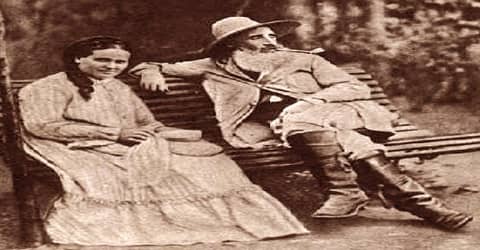
(Camille Pissarro and his wife, Julie Vellay)
About 1860 Camille began a relationship with Julie Vellay, a vineyard grower’s daughter, his mother’s maid, and in 1863 their first child, Lucien, was born. In 1871 in Croydon Camille married her. They lived outside Paris in Pontoise and later in Louveciennes, both of which places inspired many of his paintings including scenes of village life, along with rivers, woods, and people at work. He also kept in touch with the other artists of his earlier group, especially Monet, Renoir, Cézanne, and Frédéric Bazille.
The couple had eight children of whom one died at birth. All his children were painters of whom Lucien, Georges Henri Manzana, and Félix were Impressionist and Neo-impressionist painters. Orovida Pissarro, his grand-daughter from Lucien was also a painter.
Career and Works
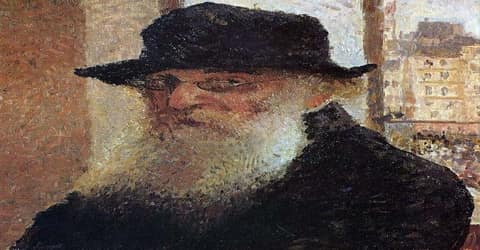
In 1849 Camille Pissarro made the acquaintance of Danish artist Fritz Melbye, who encouraged him in his artistic endeavors. In 1852 Pissarro and Melbye left St. Thomas for Venezuela, where they lived and worked for the next few years. In 1855 Pissarro returned to Paris, where he studied at the École des Beaux-Arts and Académie Suisse and worked closely with painters Camille Corot and Gustave Courbet, honing his skills and experimenting with new approaches to art. Pissarro eventually fell in with a group of young artists, including Claude Monet and Paul Cézanne, who shared his interests and questions. The work of these artists was not accepted by the French artistic establishment, which excluded nontraditional painting from the official Salon exhibitions.
Pissarro was frustrated by the conventional approach to painting that he encountered in the academies. A few artists were rebelling; painters such as Jean-Baptiste Camille Corot were painting landscapes on the spot, outdoors (en plein air), in a freer and softer style. Pissarro became Corot’s pupil, and the work he exhibited in the 1860s reflects Corot’s influence.
Pissarro began to attend private classes at the École des Beaux-Arts in 1856, and in 1861 he registered as a copyist at the Louvre. He also attended the Académie Suisse, a “free studio,” where he met future Impressionists Claude Monet, Paul Cézanne, and Armand Guillaumin. Through Monet, he also met Pierre-Auguste Renoir and Alfred Sisley.
In 1863, the Salon rejected most of the paintings of the group. The then Emperor of France, Napoleon III arranged for their paintings to be displayed in the ‘Salon des Refusés’ hall. The exhibition included paintings of Pissarro and Paul Cézanne only but failed to garner much response from either the public or the Salon.
Indeed, when he first showed work at the Paris Salon of 1859, Pissarro called himself “Pupil of A. Melbye,” a title he continued to use until 1866. He was also taught informally by Corot, who urged him to paint from nature. Reflecting the influence of Corot, Pissarro’s early paintings usually include a path or river receding in perspective, as well as figures generally viewed from the back that give an overall sense of scale. His early works are blonde and green in tonality, however, in contrast to the silvery tonality of Corot’s work.
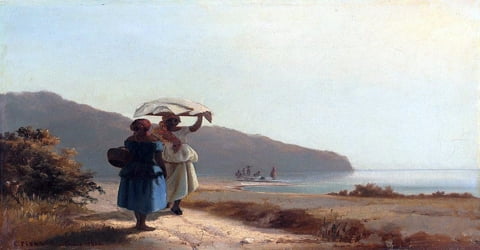
(Two Women Chatting by the Sea, St. Thomas, 1856)
During the 1865 and 1866 exhibitions of Salon he inducted names of Camille Corot and Anton Melbye as his teachers in the catalog but in 1868 he came up as an independent painter without crediting anybody. He moved with his family to Norwood in England following the Franco-Prussian War and the Commune during 1870-71. He along with Claude Monet examined works of English landscape artists in museums and made a series of landscape paintings covering the surroundings of Crystal Palace and Norwood. Returning to his home in France at the end of the conflict, Pissarro discovered that the majority of his existing body of work had been destroyed.
In 1873, Camille Pissarro established a collective of 15 artists with the goal of offering an alternative to the Salon. The following year, the group held their first exhibition. The unconventional content and style represented in the show shocked critics and helped to define Impressionism as an artistic movement. For his part, Pissarro exhibited five paintings in the show, including Hoar Frost and The Old Road to Ennery. The group would hold several more exhibitions over the coming years, though they slowly began to drift apart.
The group exhibited together again in 1874; critics dubbed them the Impressionists, after the title of one of Monet’s works, Impression: Sunrise. The name was not meant to flatter. Critics meant that the group’s paintings were mere ‘impressions’, or sketches, not finished works of art.
After a year in Paris, Camille, therefore, began to leave the city and paint scenes in the countryside to capture the daily reality of village life. He found the French countryside to be “picturesque,” and worthy of being painted. It was still mostly agricultural and sometimes called the “golden age of the peasantry”:17 Pissarro later explained the technique of painting outdoors to a student:
“Work at the same time upon the sky, water, branches, ground, keeping everything going on an equal basis and unceasingly rework until you have got it. Paint generously and unhesitatingly, for it is best not to lose the first impression.”
Pissarro became a mentor to the younger artists, including Paul Cezanne and Paul Gauguin, two of the most important Post-Impressionist artists. Pissarro befriended them, painted with them, and promoted their work when they were still outsiders in the Paris art world. He was also open to learning from younger artists.
In the late 1860s or early 1870s, Pissarro became fascinated with Japanese prints, which influenced his desire to experiment in new compositions. He described the art to his son Lucien:
“It is marvelous. This is what I see in the art of this astonishing people … nothing that leaps to the eye, a calm, a grandeur, an extraordinary unity, a rather subdued radiance …”
Pissarro attempted different styles and themes in his work and at a later stage studied Neo-Impressionist style in the 1880s. He also adopted a new technique, the ‘pointillist’ approach of post-Impressionist painter, Georges Seurat, and his contemporary Paul Signac after meeting them in 1885.
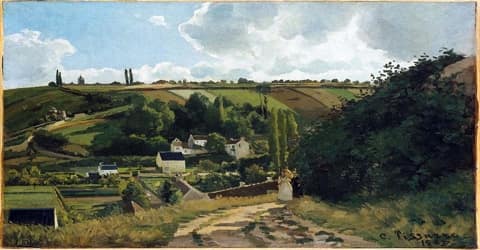
(Jalais Hill, Pontoise, 1867)
In subsequent Salon exhibits of 1865 and 1866, Pissarro acknowledged his influences from Melbye and Corot, whom he listed as his masters in the catalog. But in the exhibition of 1868, he no longer credited other artists as an influence, in effect declaring his independence as a painter. This was noted at the time by art critic and author Émile Zola, who offered his opinion:
“Camille Pissarro is one of the three or four true painters of this day … I have rarely encountered a technique that is so sure.”
Another writer tries to describe elements of Pissarro’s style:
“The brightness of his palette envelops objects in an atmosphere … He paints the smell of the earth.”
In 1885, Pissarro began to work with the Neo-Impressionists Georges Seurat and Paul Signac, helping them develop their color theories and adopting their distinctive brushstrokes. But in the last decade of his life, he returned to the Impressionist style. Pissarro continued to paint until his death on November 13, 1903.
His new paintings that were displayed during the 1886 Impressionist Exhibition were remarkably different from his earlier Impressionists works. However, at a later stage, he moved away from the Neo-Impressionist form of art.

(Road to Versailles at Louveciennes, 1869 by Camille Pissarro)
In the early 1870s, Pissarro devoted a great deal of thought to the idea of creating an alternative to the Salon, a plan he discussed with Monet, Renoir, and others. They devised the idea of a society with a charter based on that of a local bakers’ union, and by January 1874 Pissarro helped found a cooperative along these lines. In April of that year, the group held their first exhibition at the studio of the photographer Nadar in Paris, at 35 Boulevard des Capucines, a show that became known as the first Impressionist exhibition. Pissarro showed five paintings at the show, including Hoar Frost, The Old Road to Ennery, Pontoise (1873). Among those who also showed their work were Monet, Renoir, Sisley, Cézanne, Edgar Degas, and Berthe Morisot.
Through the paintings Pissarro completed at this time, he records Sydenham and the Norwoods at a time when they were just recently connected by railways, but prior to the expansion of suburbia. One of the largest of these paintings is a view of St. Bartholomew’s Church at Lawrie Park Avenue, commonly known as The Avenue, Sydenham, in the collection of the London National Gallery. Twelve oil paintings date from his stay in Upper Norwood and are listed and illustrated in the catalog raisonné prepared jointly by his fifth child Ludovic-Rodolphe Pissarro and Lionello Venturi and published in 1939. These paintings include Norwood Under the Snow, and Lordship Lane Station, views of The Crystal Palace relocated from Hyde Park, Dulwich College, Sydenham Hill, All Saints Church Upper Norwood, and a lost painting of St. Stephen’s Church.
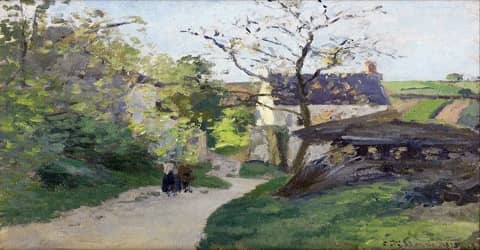
(Le grand noyer à l’Hermitage, 1875)
As critics often point out, it’s hard for us today to see what was so scandalous and offensive about Impressionism. But at the time, their paintings looked very improvisational next to the polished works produced by academic artists imitating the Old Masters. Like other members of the Impressionist group, Pissarro wanted to recreate the experience of seeing, to reproduce the interplay of light and color that forms our impressions of the world around us. He often took as his subject matter everyday sights, such as a street full of traffic, a hillside lit by the sun, or a neighborhood transformed by snowfall.
In one of the numerous letters to his son Lucien, part of a correspondence lasting 20 years (until Pissarro’s death), the artist wrote in 1883: “I will calmly tread the path I have taken, and try to do my best.” It was difficult to remain calm, however. The collapse of the French economy in the early 1880s meant that Pissarro found it harder than ever to sell work, plus he had become uncertain about the direction his art was taking, using an increasingly small brushstroke and attempting to give his work a greater sense of structure.
In 1884, art dealer Theo van Gogh asked Pissarro if he would take in his older brother, Vincent, as a boarder in his home. Lucien Pissarro wrote that his father was impressed by Van Gogh’s work and had “foreseen the power of this artist”, who was 23 years younger. Although Van Gogh never boarded with him, Pissarro did explain to him the various ways of finding and expressing light and color, ideas which he later used in his paintings, notes Lucien.
The eighth and last Impressionist exhibition in 1886 showed the lack of harmony among the remaining artists, as the work of the Neo-Impressionists was shown separately from that of the others. Moreover, both Monet and Renoir were absent. Seurat showed his enormous A Sunday on La Grande Jatte 1884 (1884–86), which dominated the room that contained Pissarro’s own Neo-Impressionist submissions: nine oil paintings, among them View from My Window, Eragny-sur-Epte (1886–88), as well as gouaches, pastels, and etchings. The Irish critic George Moore’s lack of comprehension of Pissarro’s new work was typical: “Owing to a long and intimate acquaintance with Pissarro and his work, I could distinguish between him and Seurat, but to the ordinary visitor, their pictures were identical.”
Returning to France, in 1890 Pissarro again visited England and painted some ten scenes of central London. He came back again in 1892, painting in Kew Gardens and Kew Green, and also in 1897, when he produced several oils described as being of Bedford Park, Chiswick, but in fact all being of the nearby Stamford Brook area except for one of Bath Road, which runs from Stamford Brook along the south edge of Bedford Park.
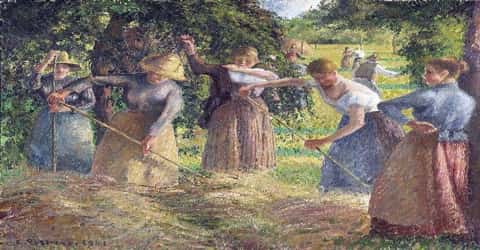
(Hay Harvest at Éragny, 1901)
In his later years, Pissarro suffered from a recurring eye infection that prevented him from working outdoors during much of the year. As a result of this disability, he often painted while looking out the window of a hotel room.
During his lifetime, Camille Pissarro sold few of his paintings. By the 21st century, however, his paintings were selling for millions. An auction record for the artist was set on 6 November 2007 at Christie’s in New York, where a group of four paintings, Les Quatre Saisons (the Four Seasons), sold for $14,601,000 (estimate $12,000,000 – $18,000,000). In November 2009 Le Pont Boieldieu et la Gare d’Orléans, Rouen, Soleil sold for $7,026,500 at Sotheby’s in New York. In February 2014 the 1897 Le Boulevard de Montmartre, Matinée de Printemps, originally owned by the German industrialist and Holocaust victim Max Silberberg (de), sold at Sotheby’s in London for £19.9M, nearly five times the previous record.
Awards and Honor
Caribbean author and scholar Derek Walcott based his book-length poem, Tiepolo’s Hound (2000), on Pissarro’s life.
Death and Legacy
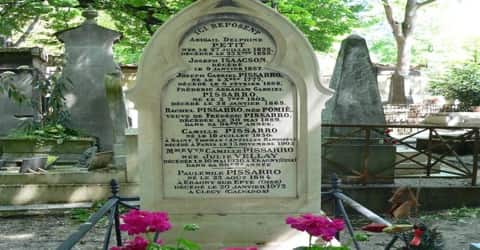
Camille Pissarro died either on November 12 or November 13 in 1903 in Eragny-sur-Epte and was buried in Paris in the ‘Pere Lachaise Cemetery’ where his tomb states the date November 12, 1903.
Camille Pissarro was a major figure in the history of Impressionism. His continuing belief in the value of independent group exhibitions and his commitment to representing landscapes under specific weather and light conditions made him, in some ways, the quintessential Impressionist. By the end of his life, he was beginning to gain critical recognition and praise, an estimation that continued throughout the 20th century when critics and scholars consistently acknowledged his place as a key figure in Impressionism.
One such lost piece, Pissarro’s 1897 oil painting, Rue St. Honoré, Apres Midi, Effet de Pluie, was discovered hanging at Madrid’s government-owned museum, the Museo Thyssen-Bornemisza. In January 2011 the Spanish government denied a request by the US ambassador to return the painting. At the subsequent trial in Los Angeles, the court ruled that the Thyssen-Bornemisza Collection Foundation was the rightful owner. Pissarro’s Le Quai Malaquais, Printemps is said to have been similarly stolen, while in 1999, Pissarro’s 1897 Le Boulevard de Montmartre, Matinée de Printemps appeared in the Israel Museum in Jerusalem, its donor having been unaware of its pre-war provenance. In January 2012, Le Marché aux Poissons (The Fish Market), a color monotype, was returned after 30 years.
Many of his descendants through his daughter Jeanne Pissarro were artists including Henri Bonin-Pissarro, Claude Bonin-Pissarro, and Frédéric Bonin-Pissarro. Joachim Pissarro, his great-grandson is a historian of art and served the ‘Museum of Modern Art’ in New York City as a curator of sculpture and painting. Joachim is at present a professor at the Art Department of the ‘Hunter College’.
Pissarro bridged the 19th and 20th centuries in his art and life. Despite his humble nature, Pissarro’s legacy his unrelenting interest in change, his influence on seminal artists such as Cézanne and Gauguin, and his steadfast opposition to the artistic establishment powerfully shaped the development of the early 20th-century avant-garde.
Information Source:
